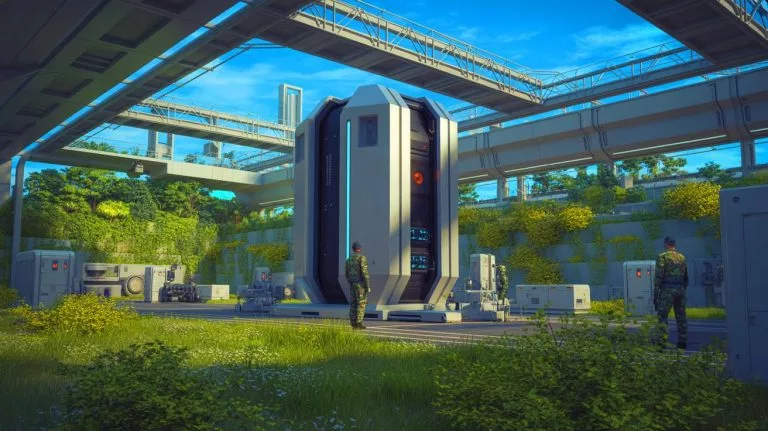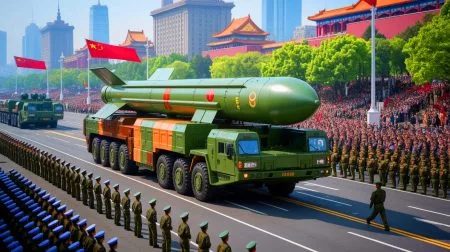| IN A NUTSHELL |
|
In a significant move towards modernizing energy solutions, the U.S. Air Force has awarded Nano Nuclear Energy a contract to explore the feasibility of deploying their Kronos micro modular nuclear reactor system at Joint Base Anacostia-Bolling (JBAB) in Washington, D.C. This innovative project, backed by AFWERX, the innovation arm of the U.S. Air Force, aims to assess JBAB’s current and future energy demands while addressing grid vulnerabilities and environmental considerations. The $1.25 million contract represents a concerted effort to enhance energy resilience at one of the nation’s key military installations.
The US Air Force Contract
The Direct to Phase II (D2P2) innovation research contract awarded to Nano Nuclear Energy is a pivotal development for the Kronos nuclear microreactor program. This contract not only provides a platform for the company to interface with the defense sector but also offers invaluable insights into military energy needs. The collaboration with the 11th Civil Engineering Squadron is expected to yield a comprehensive assessment of energy requirements at JBAB.
James Walker, CEO of Nano Nuclear Energy, emphasized the importance of this contract, stating,
“Winning this D2P2 with AFWERX marks another milestone for NANO Nuclear and a validation of our belief that Kronos MMR Energy System as a leading microreactor program.”
https://www.sustainability-times.com/research/scientists-warn-seafood-waste-sparks-us-china-co2-battle-over-billion-dollar-green-tech-race/
The initiative aligns with the Air Force’s goal of achieving energy resilience, leveraging the advanced capabilities of nuclear microreactors to ensure uninterrupted power supply and operational efficiency.
Jay Yu, Founder and Chairman of NANO Nuclear Energy, noted that this contract underscores the growing demand for next-generation nuclear solutions, reinforcing the company’s leading role in introducing microreactors to the defense ecosystem.
Nano Nuclear Energy’s Kronos Nuclear Microreactor
The Kronos microreactor is a stationary, high-temperature gas-cooled nuclear reactor designed to deliver 15 megawatts of electric power and 45 megawatts of thermal power. Its design emphasizes sustainability, with a fourth-generation nuclear energy system capable of operating for several decades across various industries and environments.
One of the standout features of the Kronos system is its use of meltdown-resistant TRISO fuel, coupled with passive helium cooling. This ensures the reactor can automatically shut down safely without human intervention, enhancing both safety and reliability. The reactor’s built-in resilience to cyber and physical threats makes it an ideal choice for critical military operations.
The incorporation of molten salt thermal storage allows the reactor to store excess heat, which can be used to generate steam and power turbines as needed. This flexibility in energy output ensures that the reactor can meet varying power demands efficiently. Additionally, the fuel core is rated for 20 years of full power operation, reducing the dependency on fuel convoys and logistical support. Beyond this period, the system allows for a simple cartridge replacement to extend its operational life.
Strategic Implications for Energy and Defense
The deployment of Kronos microreactors at military installations like JBAB signifies a broader strategic shift in how the Department of Defense approaches energy security. The ability to generate reliable, carbon-free power on-site reduces dependence on external energy sources and enhances operational autonomy. This is particularly crucial in urban military settings where energy demands are complex and multifaceted.
The potential for deploying multiple units of the Kronos reactor provides scalability, allowing installations to tailor their power generation capabilities to their specific needs. This adaptability is key to meeting the diverse energy requirements of modern military bases, which must support everything from residential quarters to high-tech surveillance and communication systems.
The initiative also positions the U.S. military as a leader in adopting cutting-edge energy technologies, setting a precedent for other sectors to follow. By investing in advanced nuclear solutions, the Department of Defense is not only addressing immediate energy challenges but also contributing to broader efforts to combat climate change through reduced carbon emissions.
Challenges and Considerations
While the promise of nuclear microreactors is significant, there are several challenges that must be addressed to ensure successful deployment. Regulatory hurdles, environmental considerations, and public perception are critical factors that can influence the project’s trajectory. The integration of nuclear technology in densely populated urban areas requires meticulous planning and robust safety measures to mitigate any potential risks.
The collaboration with the 11th Civil Engineering Squadron will be instrumental in navigating these challenges, providing the technical expertise and strategic oversight needed to align the project with existing regulatory frameworks. Furthermore, ongoing engagement with stakeholders, including local communities and environmental organizations, will be essential to fostering trust and transparency in the deployment process.
The success of the Kronos project at JBAB could serve as a blueprint for future endeavors, paving the way for broader adoption of microreactors across military and civilian sectors. However, achieving this will require sustained commitment, innovation, and collaboration among all parties involved.
As the U.S. Air Force and Nano Nuclear Energy embark on this ambitious journey, the potential to redefine energy resilience and security looms large. How will this pioneering initiative shape the future of energy solutions in both military and civilian contexts? The answers may hold the key to a new era of sustainable power.
Did you like it? 4.4/5 (24)







Wow, 20 years of power without human intervention? Sounds like science fiction! 🚀
This is really exciting! Does this mean we’ll eventually have nuclear-powered airplanes too? ✈️
Is it really safe to have nuclear reactors at military bases? 🤔
Carbon-free power sounds great, but aren’t there risks with nuclear energy?
Great step towards carbon-free energy! Thank you, Nano Nuclear Energy! 🌍
Finally, some innovation in military energy! Kudos to the Air Force for thinking ahead. 👏
This is amazing news. Imagine the savings on energy costs over two decades! 💸
Wow, a $1.25 million contract! Can I get a microreactor for my house? 😆
What happens after the 20 years are up? Do they just swap out the reactor core?
How safe is this reactor in terms of nuclear waste management?
Why not invest this money in solar panels and wind turbines instead? 🌞💨
Finally, some real progress in sustainable energy solutions for the military!
Why isn’t the budget bigger for such a critical project?
So, does this mean no more fuel convoys? That would be a huge win for safety!
Can these microreactors be deployed in civilian areas too?
Isn’t this just moving the problem from carbon emissions to nuclear waste?
I’m skeptical. Nuclear energy has too many risks involved. 🛑
Exciting times for renewable energy in the defense sector!
How does this reactor compare to traditional nuclear reactors in terms of safety?
Can this technology be exported to other countries, or is it US-exclusive?
Kinda wish they’d focus on less controversial energy sources. 😕
$1.25 million seems like a bargain for such advanced technology. Is it enough?
This is fascinating, but how much does it really reduce carbon emissions?
Are there any plans to use these reactors for civilian energy needs?
How will they ensure cyber security for these reactors? Seems critical! 🔒
Are there any backup systems if the reactor fails?
20 years with no human intervention sounds ambitious. Hope it works out!
Meltdown-resistant TRISO fuel? Sounds like something from a sci-fi movie! 🚀
Does this mean we’ll see less dependence on foreign oil? 🚗💨
As long as it’s safe, I’m all for nuclear energy replacing fossil fuels.
Is this the beginning of a nuclear renaissance in the US? 🌟
I’m all for reducing carbon emissions, but nuclear scares me. 😨
How long before we see these reactors in action?
What’s TRISO fuel, and why is it meltdown-resistant?
I’m curious about the environmental impact of this project.
Finally, a project that aligns military needs with environmental goals!
How will they address public concerns about nuclear safety? 🗣️
Hope they have a solid plan for dealing with nuclear waste. 😬
It’ll be interesting to see how this affects military strategy long-term.
Hope they share their findings for broader civilian applications! 🏢